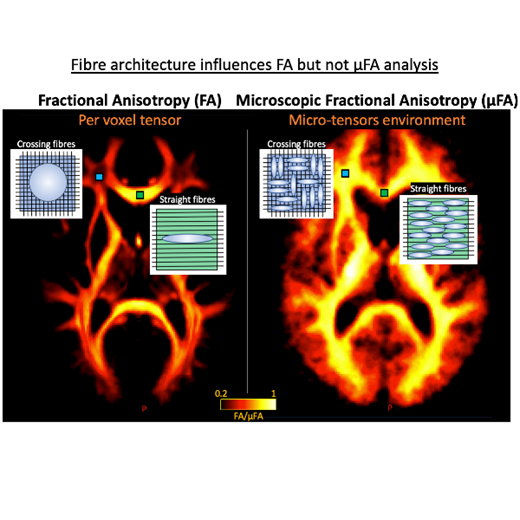Novel Software for MRI Pinpoints Previously Undetected Brain Damage in Patients with Multiple Sclerosis
New method improves detection of disease changes.
Using new MRI method, providers can identify damage to white brain matter in patients with multiple sclerosis that has previously appeared normal, according to new research findings.
By using a novel software solution, developed by MRI software solution company Random Walk Imaging (RWI), investigators showed that enhancing MRI images to the microscopic level can reveal a greater level of detail about damage to the brain than was previously possible. This data can help researchers determine a stronger correlation to disease clinical and cognitive scores, the team said.
“The data from this study provide convincing evidence that microscopic mapping substantially advances the assessment of cerebral white matter degeneration in multiple sclerosis,” said Tim Dyrby, Ph.D., the associate professor who led the study at the Danish Research Center for Magnetic Resonance, Copenhagen University Hospital Hvidovre and Technical University of Denmark. “This information, which cannot be seen using standard MRI techniques, such as diffusion tensor imaging (DTI), could provide a unique opportunity for precision imaging, leading to a more accurate diagnosis both in MS and other degenerative CNS diseases.”
The team published their results in Brain Communications.
Typically, MRI images are used to detect the damage multiple sclerosis causes to the nerve myelin and the central nervous system. Fractional anisotropy, which is mapped with DTI on the MRI scanner, is also used to measure the white matter degeneration caused by multiple sclerosis. However, because FA also picks up on the different orientations of white matter fibers, the actual detection of disease-related damage can be distorted.
Courtesy: Brain Communications

To correct this problem, RWI developed a new DTI MRI methodology that can produce a microscopic FA (mFA) metric that is not affected by white matter orientation. Researchers tested the methodology by comparing normal-appearing white matter from 26 patients who had relapsing-remitting multiple sclerosis, 14 patients with primary progressive multiple sclerosis, and 27 age-matched healthy patients. They used standard FA and mFA mapping with RWI’s tool.
According to the study results, the mean standard FA and mFA of normal-appearing white matter was significantly reduced in multiple sclerosis patients compared to the healthy participants. The mFA, though, did a significantly better job in detecting disease-related white-matter alternations in patients with both types of multiple sclerosis.
The researchers said the mean mFA reduction – which represented degenerated fibers – also showed:
- A significant positive linear relationship with physical disability, reflected by the expanded disability status scale (an internationally recognized measurement of multiple sclerosis disability)
- A positive correlation with individual cognitive dysfunction, measured with the symbol digit modality test
- A positive relationship with total white matter lesion load, as well as lesion load in specific tract systems
In comparison, standard mean FA was unable to distinguish any of these relationships between normal-appearing white matter microstructure and clinical, cognitive, or structural measures, the team reported.
Ultimately, the team said, they hoped these findings will be able to change and improve the clinical services available for patients who have multiple sclerosis.
“These findings are highly interesting,” said Finn Sellebjerg, M.D., Ph.D., neurology professor at the University of Copenhagen and head of the Danish Multiple Sclerosis Center. “I hope that this new diffusion MRI analysis will prove valuable in diagnosing and monitoring treatment of multiple sclerosis in the future.”
Can Abbreviated Breast MRI Have an Impact in Assessing Post-Neoadjuvant Chemotherapy Response?
April 24th 2025New research presented at the Society for Breast Imaging (SBI) conference suggests that abbreviated MRI is comparable to full MRI in assessing pathologic complete response to neoadjuvant chemotherapy for breast cancer.
New bpMRI Study Suggests AI Offers Comparable Results to Radiologists for PCa Detection
April 15th 2025Demonstrating no significant difference with radiologist detection of clinically significant prostate cancer (csPCa), a biparametric MRI-based AI model provided an 88.4 percent sensitivity rate in a recent study.
Could Ultrafast MRI Enhance Detection of Malignant Foci for Breast Cancer?
April 10th 2025In a new study involving over 120 women, nearly two-thirds of whom had a family history of breast cancer, ultrafast MRI findings revealed a 5 percent increase in malignancy risk for each second increase in the difference between lesion and background parenchymal enhancement (BPE) time to enhancement (TTE).